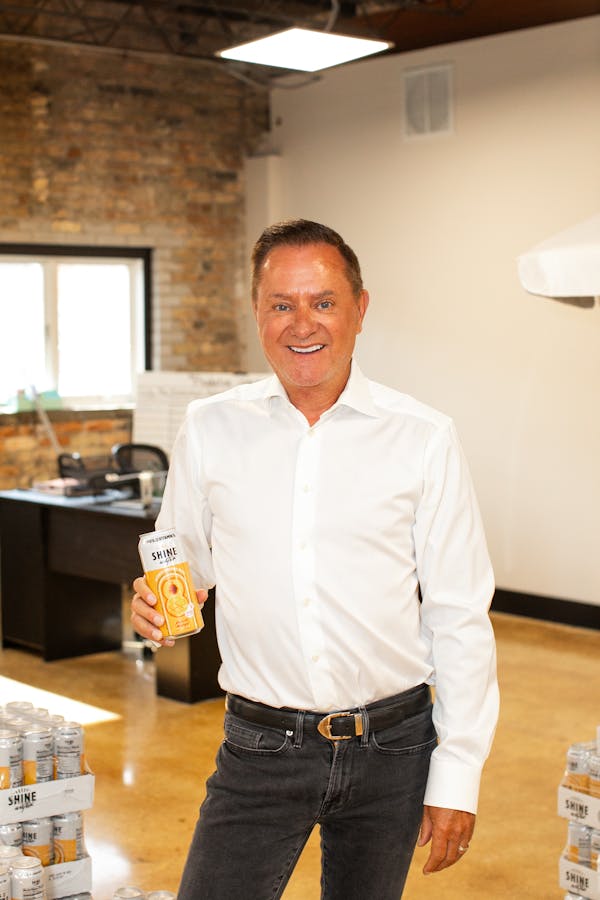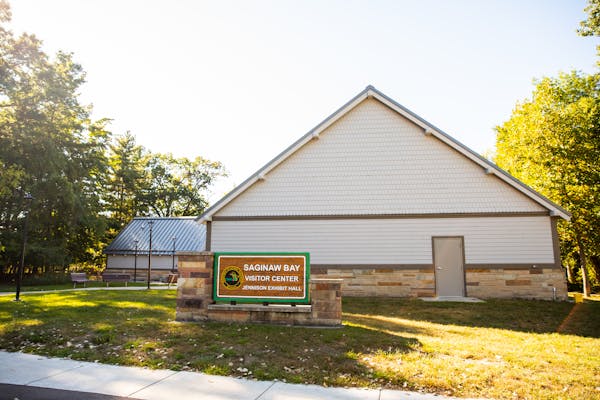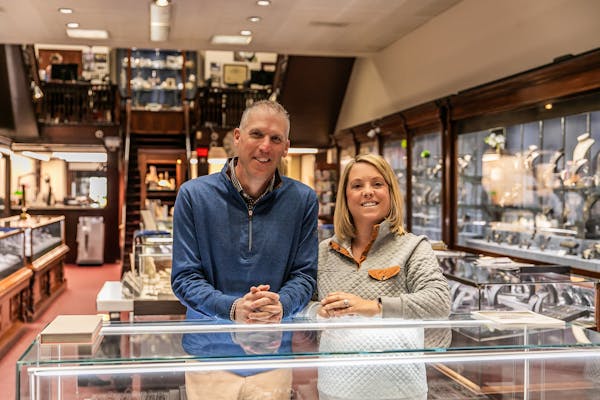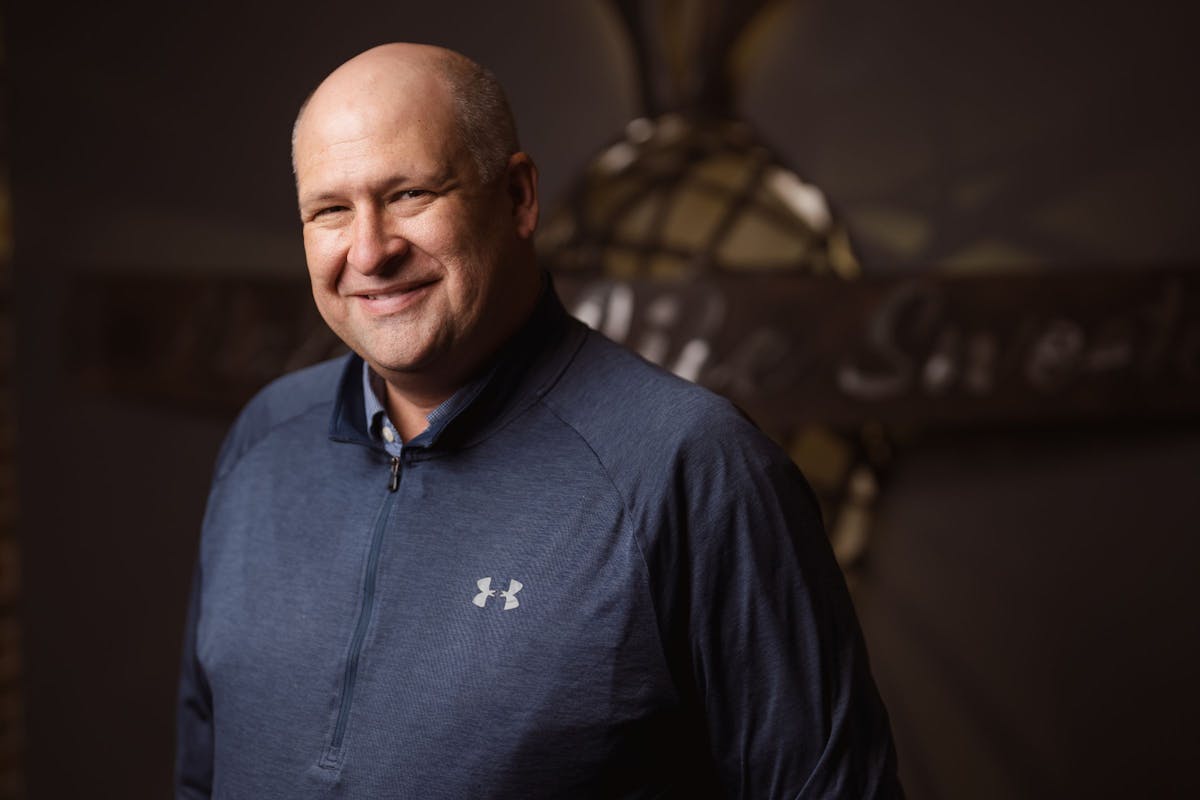
“My mom and dad lived in Honeoye, a small town in New York. My dad was a minister and my mom was the church organist. We lived there for a couple years, then moved to Milwaukee, and then to Illinois and that’s where I really grew up.
After high school, my parents suggested I check out Knox College. I grew up singing and both of my parents have music degrees. When I enrolled at Knox, I was bent on NOT studying music, but by the end of my sophomore year, I had been convinced that maybe I should give music a try. I decided to become a vocal music major and it was probably the best decision I made academically.
I studied music around the world. I sang in three different choirs. I was singing everything from renaissance and medieval music, to traditional choral music. I'll never forget the first time saying the Hallelujah chorus with a full orchestra, or singing Carmina Burana by Carl Orff with a full orchestra. That's quite a feeling. When that first note hits, there's nothing like it! It feels like magic.
Despite that, I wasn't really interested in making my living being a musician. But I was spending a considerable amount of time in college working on our school’s student newspaper and during my senior year, became the editor. I really enjoyed it, and I decided to get into journalism.
I loved the process of gathering the news, interviewing people, going out and looking for stories, the photography, the writing, and everything that went into it. I enjoyed the creation of the actual newspaper. Like a daily art project, you got to see the fruits of your labor.
I liked knowing what was happening and being informed. When you're a journalist, and you're talking to all these different people, you get to know the community.
As graduation grew closer, I had decided I was going to apply to newspapers wherever I could. I went to the public library and grabbed every newspaper they had off the shelf and then sent them all resumes and cover letters.
The last paper I grabbed was this little weekly paper called The Galva News, a local newspaper from a small town in Illinois of 3000 people.
The headline that day, which looked like it had been pasted in very late at night, said ‘Editor dies at age 34.’ And as terrible as it sounds, I thought to myself, ‘They probably need someone!’
I didn't know anything about Galva, but I threw my hat in the ring anyway.
And, right out of college, I got my first job in journalism: I became the editor of The Galva News.
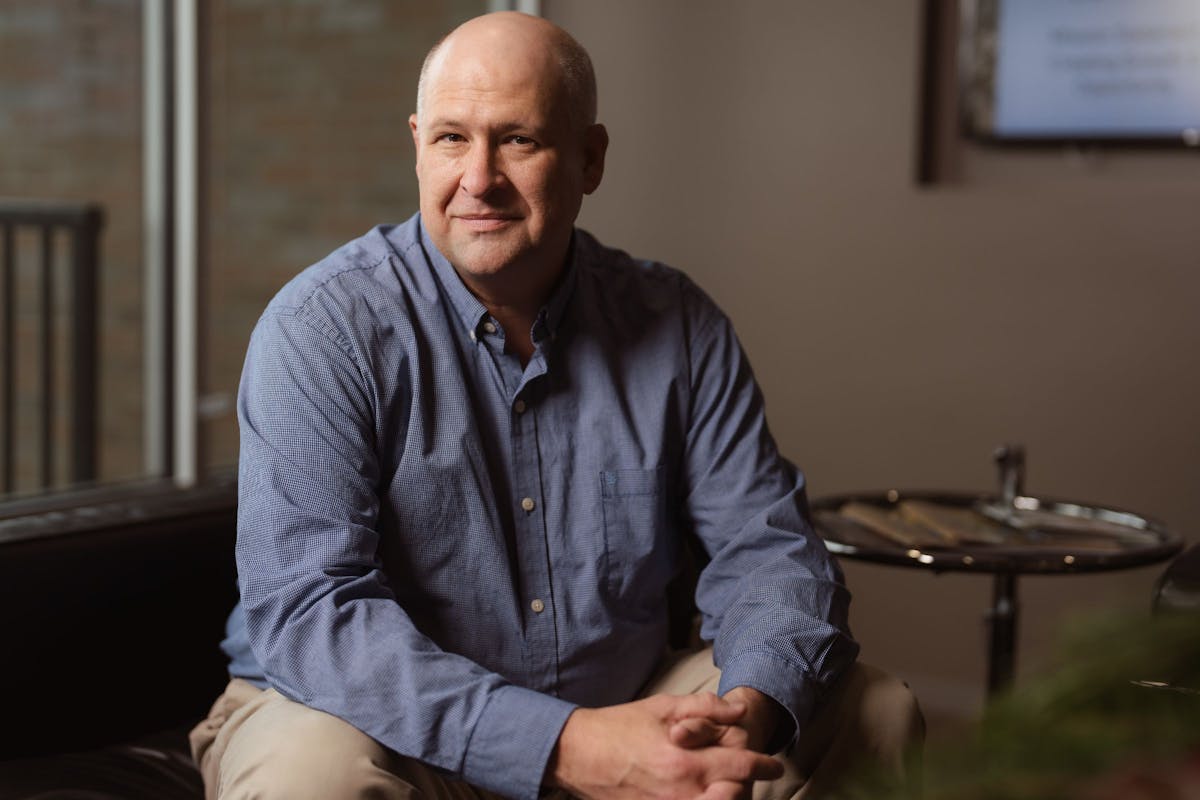
The gentleman managing The Galva News was a retired Associated Press reporter named Bud McKagan, a great newspaper name! When Bud retired, he headed back to his hometown in Lafayette, Illinois, was hired to be the general manager of this weekly paper in Galva. Bud was my first boss, and working for Bud was like going to journalism grad school. It felt like he taught me the entire newspaper business in just three years—it was amazing.
The biggest lesson I learned from him I learned probably within the first month or two of working there. Back in those days, you would print out your story, cut it, send it through a wax machine, and then you'd actually paste it up on a pasteboard to be looked at before going to print.
I had just pasted up one of my stories for the week when Bud came in. He put on his glasses and started reading. When he got done, he turned to me and said, ‘Clark, you can't just print anything you want in this newspaper.’
Lesson learned.
You have to have thick skin as a journalist and I certainly developed that working with Bud. But he was right: the work that I had done wasn't good, and knowing that is an important part of getting better. That was the great thing about him, even though he's saying, ‘Hey, this is not good,’ he was actually saying, ‘Let's work on it and get it to be good.’ He was incredible and I really appreciated that honest feedback that he gave me from day one. He held me accountable. He held me to high standards and he showed me that if I wanted to be a journalist, I was going to have to work hard at it.
After three years in this little town of Galva, which was wonderful, I went to work at its parent paper in Galesburg to work as their business editor. But I really didn't want to stay in Illinois and wanted to get back to the northern Midwest, so I went looking for jobs again and that’s when the Bay City Times came calling.
It was either 1999 or early January 2000. I came up here in a snowstorm, saw the town, and they offered me an opportunity to come here and work as their business editor. It was a good job, so I came up here to work at the Bay City Times right downtown, where the Times Lofts are now. I spent 16 years there through various iterations. There was lots of change over the years and that's where I did the bulk of my learning about Bay City.
I got to know this place through its people. My first day on the job, I was sent to cover the Bay Area Chamber of Commerce annual meeting, held at Curtis Hall at SVSU. I drove out there and walked into a room of 350 people. That could be a little intimidating, but I opened my ears and opened my eyes. One of the first things I heard was, ‘We're going to honor Peg Rowley tonight.'
And I’m thinking, ‘Who's Peg Rowley?’ That night I met Peg and I think she was probably the first person I really met and talked to in Bay City.
I had no idea how important Peg Rowley was to this community at that time. I had a conversation that night, and many conversations with Peg and Paul Rowley after that. I continued to learn about this city and about its people.
What I learned about Bay City and Bay County is that if you invest in relationships with people, the people here will invest in you. I really had a genuine passion to learn about this community through its people, and they gave it right back and helped me grow.
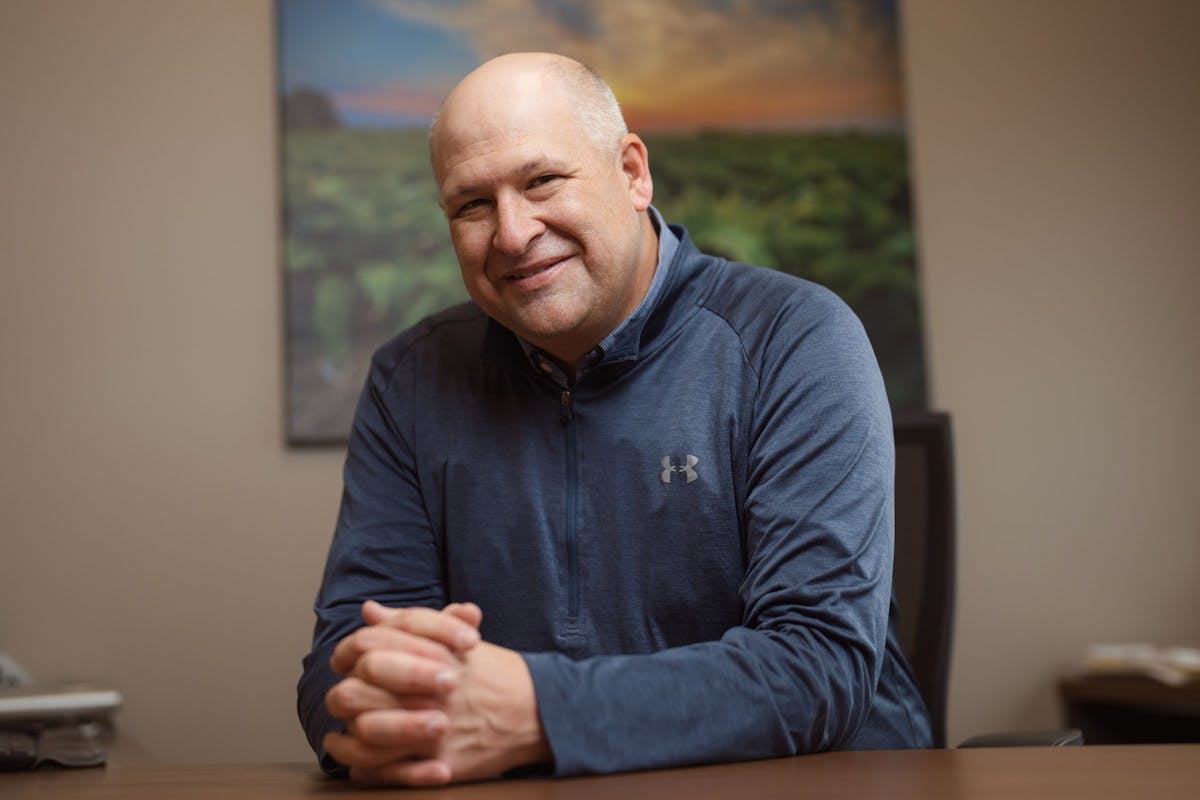
I was actually the last editor of the Bay City Times after they didn't have an editor anymore, so I was out of a job and wasn't really quite sure what I wanted to do. My wife Claire's family had migrated to the Iowa City, Iowa area, which is a beautiful part of the state. The day after I lost my job, a job came open at the Cedar Rapids Gazette, so I applied and I ended up going there to work as their city news editor.
I spent two years there, but I missed Bay City terribly. Sure, there were some good things about moving to Iowa, like getting to be close to family, and I learned a lot during those two years. I got to see community building, from a different perspective, in a new place, at a different point in my life. That was really valuable and I learned a lot of lessons there. We made some really good friends and Iowa that we still have.
But I didn't want to leave Bay City, and I realized pretty quickly when I got to Iowa that I needed to make a career change. Journalism is a really hard existence, it was a brutal, high-pressure, all day, everyday thing seriously impacting my quality of life.
One day, I got a call one day from my friend Eileen Curtis. Eileen was the president and CEO of the Bay Area Community Foundation at the time and she said, ‘Rob, I'm going to be retiring. I know you're trying to get back here, and I think you should apply for my job.’ I had never thought about doing nonprofit work, but I thought about it and started doing interviews.
I went through several interviews with the Foundation, and then the final interview was set up for a Tuesday afternoon. I'm in Iowa one day and my phone rings. I answer and say, ‘Hi, this is Rob,’ and hear, ‘Rob, this is Mark Flegenheimer from Michigan Sugar Company.’ I knew Mark because I had done interviews with him. He said, ‘I heard you're looking for a job in Bay City?’
I said that I was and he said, ‘Let's have breakfast.
So, I had breakfast with Mark at Uptown Grill the morning of the same day as my interview for the Foundation. I went to my interview for the Community Foundation job, flew home, and two days later, I withdrew my name from consideration at the Bay Area Community Foundation and was on my way working for Michigan Sugar Company.
It was a communications job with a company that I had really grown to respect over the years through reporting on them. It really fit with what I love to do. I really believed in the company, its mission and what I could do to elevate that mission. I really like Mark and he's become a mentor and a friend. I respect him greatly and I love the people. It's a company that makes something. We make something in Bay City, Michigan and that's really neat.
The really cool end of that story is, and I didn't know this at the time, but Diane Fong was hired to run the Bay Area Community Foundation after that. She's their president and CEO now and Diane is a very good friend of mine and she’s knocking it out of the park. She is way more perfect for that job than I ever would have been.

Michigan Sugar makes sugar! We grow sugar beets, extract the sugar from the beets, and then package and sell it in a number of different formats. Michigan Sugar has been around since 1906, and then in 2002, our growers formed a cooperative and bought the company. Now, we're grower-owned by about 900 farm families.
We grow upwards of 150,000 to 160,000 acres of sugar beets every year, in 20 Michigan counties and Ontario. In the fall, we harvest those beats, slice them and extract the sugar. We make about 1.2 billion pounds of sugar every year. We don't make it; Mother Nature makes it..we just extract it. We have about 1,100 employees and 1,000 year-round employees making us one of the largest employers in the region.
It's pretty neat that we are making a product right here in Bay City and the region and that it’s something used by everyone around the world.
I always say that building a community begins with good storytelling. If people don't know what's going on, tell them! I had a neighbor who has lived in this community his entire life. I was going downtown one day and I said, ‘Hey, I'm going downtown for an event.” And he said, ‘Oh, downtown, I haven't been downtown in 15 years.’
Storytelling, in that moment, was my opportunity to say, ‘You should go downtown, because of how much it’s changed in 15 years.’’
So, as a community, we have to tell our stories. We have to make sure people know all the great things going on here. Are there challenges? Yep, absolutely. There are in every community. But there are truly great things happening here and there are people doing amazing things, and we need to make sure people know about those things as well.
I also think we have to not be afraid to have big, huge, worldly ideas. We have to push ourselves to think big. There are a lot of big thinkers around here and we should never discourage big thinking and worldly, diverse ideas. We should never say, ‘That'll never work here because we're just little Bay City.’
We see that with people like Avram Golden and the effort he has going on with The Jefferson Project. The cool thing about Avram is that project is not about Avram: it’s about the community. He is such an amazing guy. He's another one who is fully invested in this community and trying to build something. We need to support and nurture that. We need to celebrate that.
There are a lot of people like that around here. It's why I fell in love with this place.”
– Rob Clark, Director of Communications and Community Relations, Michigan Sugar Company
.jpg?ixlib=gatsbyFP&auto=compress%2Cformat&fit=max&w=800&h=800)

